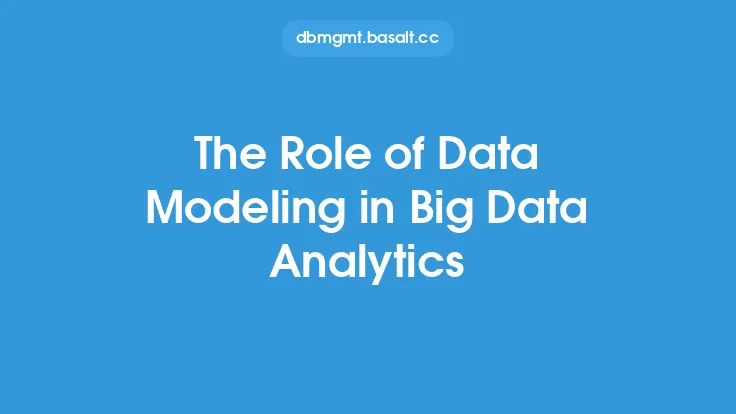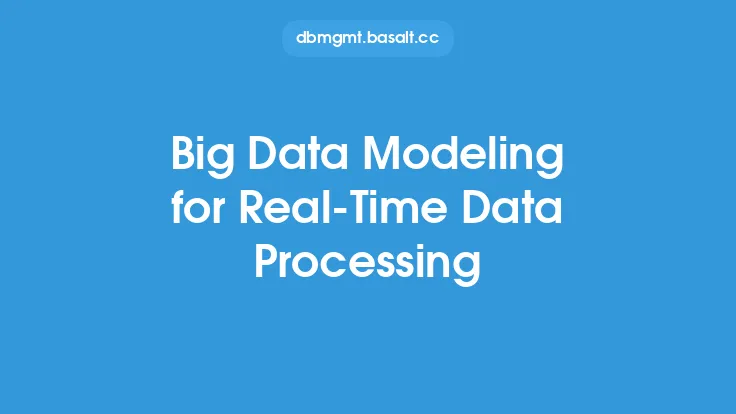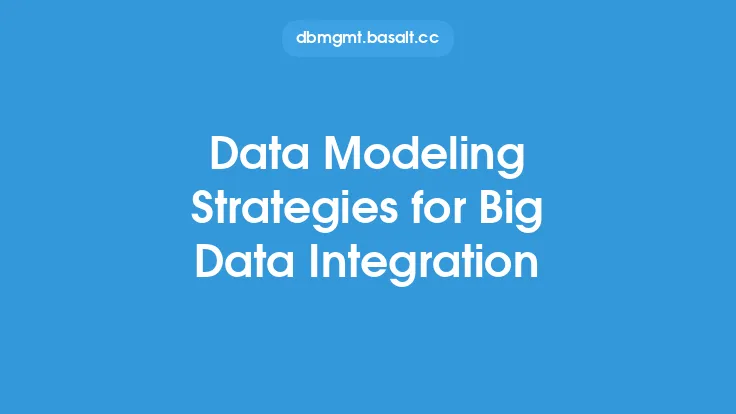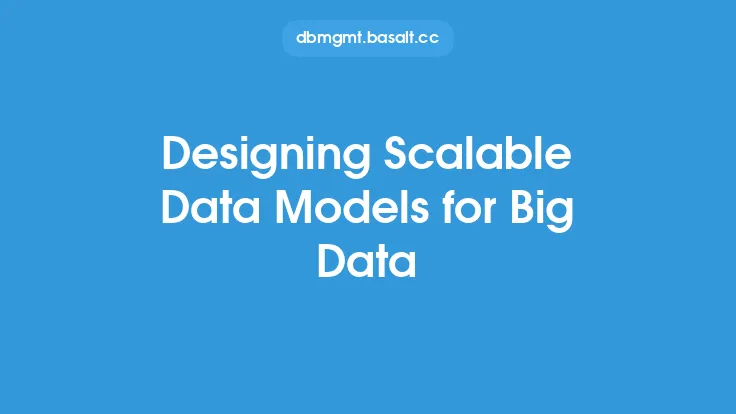The increasing volume, velocity, and variety of data have led to the development of big data modeling techniques that can efficiently handle large volumes of data. Big data modeling involves creating a conceptual representation of the data, which is essential for extracting insights and making informed decisions. In this article, we will delve into the various big data modeling techniques that are used to handle large volumes of data.
Introduction to Big Data Modeling Techniques
Big data modeling techniques are designed to handle the unique characteristics of big data, such as high volume, high velocity, and high variety. These techniques are used to create a data model that can efficiently store, process, and analyze large volumes of data. Some of the key big data modeling techniques include data warehousing, data mining, data governance, and data architecture. These techniques are used in conjunction with various tools and technologies, such as Hadoop, Spark, and NoSQL databases, to handle large volumes of data.
Data Warehousing Techniques
Data warehousing is a big data modeling technique that involves creating a centralized repository of data that can be used for reporting and analysis. Data warehousing techniques are used to design and implement a data warehouse that can handle large volumes of data. Some of the key data warehousing techniques include star and snowflake schema, fact tables, and dimension tables. These techniques are used to create a data model that can efficiently store and retrieve data.
Data Mining Techniques
Data mining is a big data modeling technique that involves using algorithms and statistical methods to extract insights from large volumes of data. Data mining techniques are used to discover patterns, relationships, and trends in the data. Some of the key data mining techniques include decision trees, clustering, and regression analysis. These techniques are used to identify areas of interest and to extract insights from the data.
Data Governance Techniques
Data governance is a big data modeling technique that involves creating policies and procedures for managing data across the organization. Data governance techniques are used to ensure that data is accurate, complete, and consistent. Some of the key data governance techniques include data quality, data security, and data compliance. These techniques are used to ensure that data is properly managed and that it meets the organization's standards and regulations.
Data Architecture Techniques
Data architecture is a big data modeling technique that involves designing and implementing a data architecture that can handle large volumes of data. Data architecture techniques are used to create a data model that can efficiently store, process, and analyze data. Some of the key data architecture techniques include data lakes, data hubs, and data pipelines. These techniques are used to create a data architecture that can handle large volumes of data and that can provide real-time insights.
NoSQL Database Techniques
NoSQL databases are a type of database that is designed to handle large volumes of unstructured and semi-structured data. NoSQL database techniques are used to design and implement a NoSQL database that can handle large volumes of data. Some of the key NoSQL database techniques include key-value stores, document-oriented databases, and graph databases. These techniques are used to create a data model that can efficiently store and retrieve data.
Big Data Modeling Tools and Technologies
Big data modeling tools and technologies are used to support big data modeling techniques. Some of the key big data modeling tools and technologies include Hadoop, Spark, and NoSQL databases. These tools and technologies are used to handle large volumes of data and to provide real-time insights. They are also used to support data warehousing, data mining, data governance, and data architecture techniques.
Best Practices for Big Data Modeling
Best practices for big data modeling involve following a set of guidelines and principles that can help ensure that big data modeling techniques are effective. Some of the key best practices for big data modeling include defining clear goals and objectives, understanding the data, and using the right tools and technologies. These best practices are used to ensure that big data modeling techniques are effective and that they provide real-time insights.
Challenges and Limitations of Big Data Modeling
Big data modeling techniques have several challenges and limitations. Some of the key challenges and limitations include handling large volumes of data, ensuring data quality, and providing real-time insights. These challenges and limitations can be addressed by using the right tools and technologies and by following best practices.
Future of Big Data Modeling
The future of big data modeling involves using advanced tools and technologies to handle large volumes of data. Some of the key trends and developments in big data modeling include the use of artificial intelligence and machine learning, the use of cloud-based big data modeling tools, and the use of real-time data processing. These trends and developments are expected to continue to evolve and to provide new opportunities for big data modeling.
Conclusion
Big data modeling techniques are essential for handling large volumes of data. These techniques involve creating a conceptual representation of the data, which is essential for extracting insights and making informed decisions. By using the right tools and technologies and by following best practices, organizations can ensure that big data modeling techniques are effective and that they provide real-time insights. As the volume, velocity, and variety of data continue to increase, big data modeling techniques will become even more important for organizations that want to extract insights and make informed decisions.





